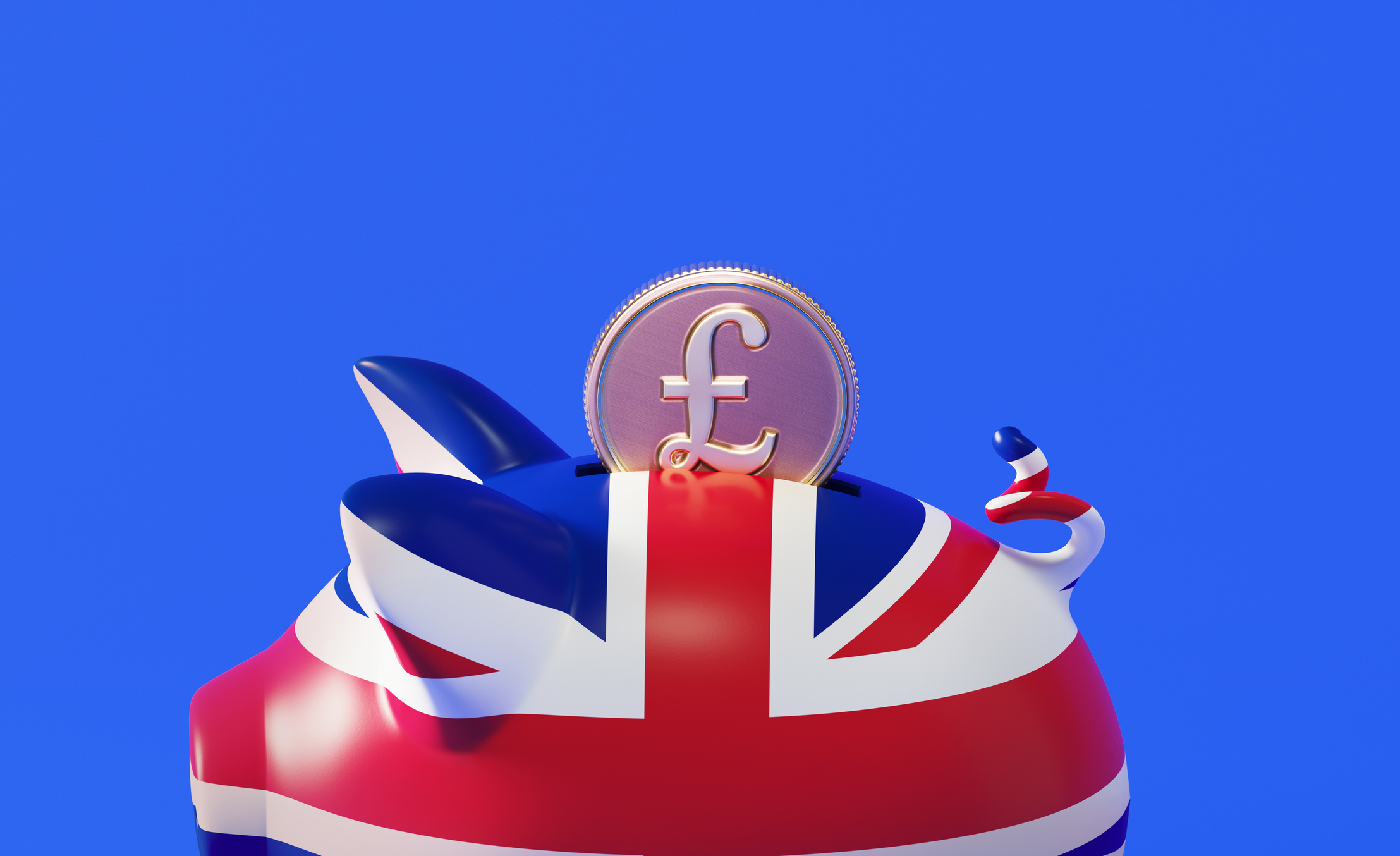NS&I launches long-awaited British Savings Bonds – are they any good?
NS&I’s British Savings Bonds are on sale from today (3 April). What rate is it offering and how does it compare to the rest of the market?


National Savings and Investments’ (NS&I) long-awaited British Savings Bonds launched on 3 April, but have the products entered the savings market on a strong foot?
The government-backed savings provider has added its new bonds to the mix a day after announcing its April Premium Bond winners, and during one of the busiest times for savers as the end of the tax year is just days away, and all eyes are on making use of the £20k ISA allowance.
But, that’s not to say people will shy away from the new savings product as NS&I is known for its handsome savings offerings, following its popular 6.2% one-year fixed bond which launched last summer. But this disappeared after just five weeks on the market due to high demand, leaving people waiting eagerly for another NS&I savings product.
MoneyWeek
Subscribe to MoneyWeek today and get your first six magazine issues absolutely FREE

Sign up to Money Morning
Don't miss the latest investment and personal finances news, market analysis, plus money-saving tips with our free twice-daily newsletter
Don't miss the latest investment and personal finances news, market analysis, plus money-saving tips with our free twice-daily newsletter
There has also been a lot of talk around the rate it will offer on the new Bonds since the Chancellor announced its launch in the Spring Budget, with the wider savings market still dishing out rates above 5%.
The million-dollar question is, what is the rate on the new British Savings Bonds? We have the full lowdown on how the saver works, how it compares to the rest of the savings market, and why it’s called ‘British Savings Bonds’.
How does NS&I’s British Savings Bonds work?
NS&I’s British Savings Bonds are offered as a three-year fixed savings account offering two ways to receive interest, at the end of the term or monthly.
NS&I’s Guaranteed Growth Bonds and Guaranteed Income Bonds are offering 4.15% AER. Here’s how the savings accounts work.
- The saver is fixed for three years, which means the rate you earn will stay put for three years and you won’t have access to your cash until your bond matures at the end of the term.
- You can open the account with £500 and save up to £1 million.
- Interest is paid after the three-year term with the Guaranteed Growth Bond.
- Interest is paid monthly if you open the Guaranteed Income Bond.
There has already been controversy around savers being required to fix their cash for three years, as even though inflation is slowing and food prices are falling, the cost of living is still taking its toll on households.
As a result, “savers largely want easy access and competitive shorter fixes right now,” says Sarah Coles, head of personal finance at Hargreaves Lansdown.
In contrast, NS&I’s Bond last summer only fixed savers cash for one year, which could be why it was so popular (along with its competitive interest rate).
According to data from Moneyfacts, the take-up of three-year fixed savers is also low compared to one or two-year fixed accounts, with only 101 three-year fixed savings products on the market as of 3 April. This compares to 206 one-year fixed bonds and 161 two-year fixed savers.
The good news is, any money saved with NS&I is backed by the Treasury and you can save up to £1 million in these British Savings Bonds. This compares to only up to £85,000 being protected in a traditional savings account with the Financial Services Compensation Scheme (FSCS). So, if you have a large sum of money to save of over £85,000, this could be an option.
But, is NS&I offering a competitive rate on its new Bonds?
How do NS&I’s Bonds compare to the rest of the savings market?
NS&I’s Guaranteed Income and Growth Bonds are offering savers 4.15% AER.
This is considerably lower than the top three-year fixed saver offered by Zenith Bank, returning 4.67% AER. Plus, with four other three-year fixed accounts offering at least 4.65%, Coles says, "NS&I British Savings Bonds may well be doomed to mid-table mediocrity.”
And when compared to the wider market, the NS&I Bonds are not competitive, as you can earn up to 5.18% with Beehive Money if you fix your cash for a year, and up to 5.07% with Beehive Money's two-year fixed saver.
Locking your cash in for longer does have its advantages too, as any movement with the Bank of England’s base rate won’t affect your return during the fixed term. But no one can predict what will happen with interest rates three years from now – If they do rise again, you risk missing out on a better return.
So, the bottom line is you can rake in a better return on your cash by fixing for a shorter period. Coles adds: “These NS&I rates just aren’t special enough to persuade swathes of new savers to tie their money up for longer. At this rate, these bonds risk disappearing without a trace.”
That said, other experts believe NS&I has priced its bonds cleverly so they can have a longer shelf life on the market, compared with its short-lived one-year fixed bond last summer.
Laura Suter, director of personal finance at AJ Bell, says: “It’s tricky for NS&I to get the interest rate right on these products: too high and they’ll attract swathes of cash and have to pull the accounts from sale, too low and savers will go elsewhere, meaning NS&I will have to crank up the interest rate later.”
Some might argue that the rates on NS&I’s new Bonds are ‘too low’, so it will be interesting to see whether it will up its return in the future, or whether the savings products will disappear from the market altogether, if demand is too low.
What’s the difference between NS&I’s Guaranteed Growth Bond and Guaranteed Income Bond?
The main difference between the two British Savings Bonds is how interest is paid to you. While that might seem like a small aspect on the surface, it’s really quite significant when it comes to paying tax.
NS&I’s Guaranteed Income Bond pays interest monthly and the Growth Bond pays interest when the product matures after three years.
If you opt for the Growth Bond you will benefit from compounding interest, which means you will end up with an attractive sum in interest at the end of three years. Whereas with the Income Bond, interest will be paid to you monthly, therefore not compounded.
But, after accumulating your return across three years with the Growth Bond, there’s a risk you could be pushed over your Personal Savings Allowance (PSA). This means you will have to pay more tax on your savings income.
If you’re a basic-rate taxpayer, your PSA is £1,000 while higher-rate taxpayers have a £500 PSA. Any interest earned above these sums is taxable.
For example, if you earned 4.15% on a balance of £10,000, you would earn £415 in interest in the first year, £432 in the second year and £450 in the third year. As the years go on, the amount of interest earned rises due to compounding interest.
This means savers would earn a total of £1,297 in interest after the three-year term.
Under the PSA rules, a basic-rate taxpayer would get taxed at 20% on £297 (the sum over their PSA), which equates to £59.40. A higher-rate taxpayer have to pay tax of £118.80, while an additional-rate taxpayer who has no PSA would have to fork out a whopping £583.65 in tax.
And as you can imagine, the more you save, the more you will get taxed.
A basic-rate taxpayer who saves £20,000 in the bond would have to pay £318 in tax. A higher-rate taxpayer who saved £20,000 would have to fork out £838 in tax. And an additional-rate taxpayer would have to pay £1,168 to the taxman.
If you opt for the Income Bond that pays interest monthly, you won’t be as likely to face the pain of a large tax bill, as any interest earned will be taxable each year.
If you do have up to £20,000 to save, it’s worth investing in an ISA as your return isn’t taxable.
Why are they called ‘British Savings Bonds’?
The name of these new NS&I savers has not only confused savers, but has intrigued people. What’s so ‘British’ about these savings accounts?
Well, according to NS&I, ‘British Savings Bonds’ is an ‘umbrella term’ for the two fixed savers which have come to the market to ‘encourage people to save for the longer term’.
The idea is that you will be backing the government’s finances and therefore investing in Britain.
Yet, Suter puts the name down to "a fancy bit of marketing".
While we don’t know when these savings products will be withdrawn from sale, NS&I has confirmed that the Bonds “will be on sale for an extended period of time rather than a short-time limited period.”
Get the latest financial news, insights and expert analysis from our award-winning MoneyWeek team, to help you understand what really matters when it comes to your finances.
Vaishali has a background in personal finance and a passion for helping people manage their finances. As a former staff writer for MoneyWeek, Vaishali covered the latest news, trends and insights on property, savings and ISAs.
She also has bylines for the U.S. personal finance site Kiplinger.com and Ideal Home, GoodTo, inews, The Week and the Leicester Mercury.
-
 ‘Why I have ditched my Help to Buy ISA for cash savings and the stock market’
‘Why I have ditched my Help to Buy ISA for cash savings and the stock market’Without the 25% bonus, my Help to Buy ISA is effectively redundant, says MoneyWeek writer Sam Walker.
-
 Is your inheritance tax allowance cut if you sell to downsize or sell your home to pay for care?
Is your inheritance tax allowance cut if you sell to downsize or sell your home to pay for care?Downsizing relief is a little-known benefit that could save your loved ones tens of thousands of pounds in inheritance tax after you’ve died.
